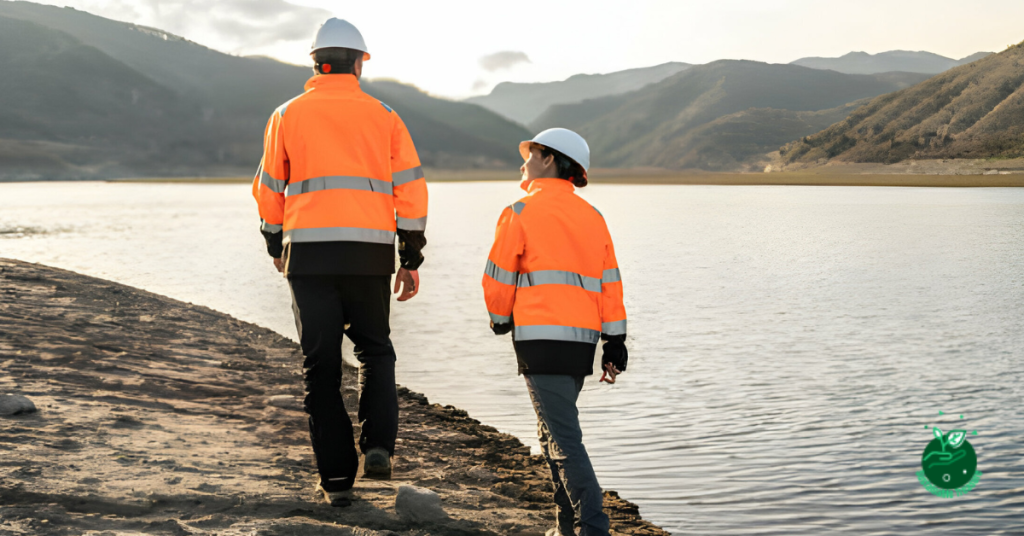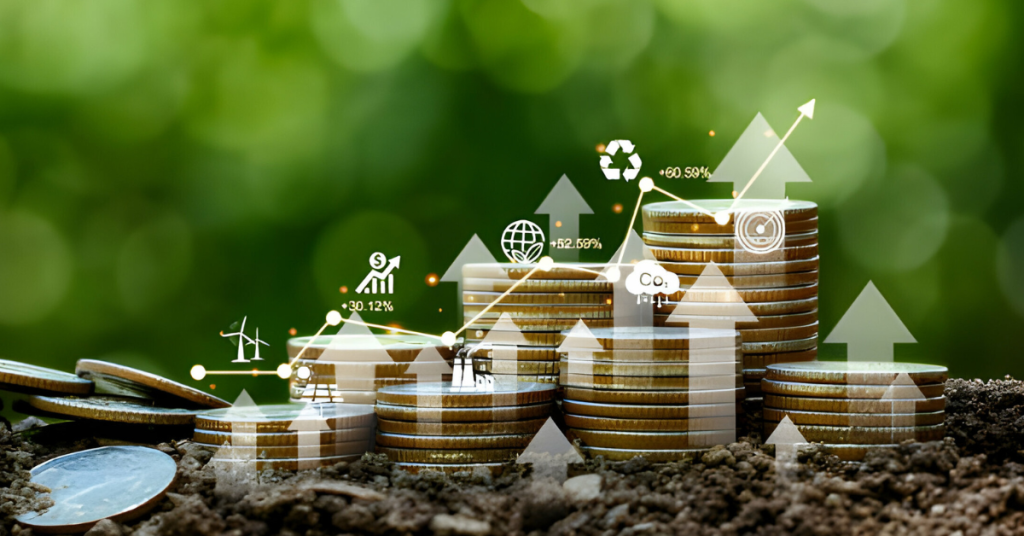Table of Contents
Why is it risky for companies to invest in renewable energy? I’ll never forget the pained expression on my friend Aditi’s face when she told me her solar company was going bankrupt.
After years striving to provide clean power to rural villages in Rajasthan, policy changes gutted the incentives making their work financially unviable. Crushed under loan burdens, the once-idealistic startup faced liquidation.
Seeing passionate teams creating sustainability solutions, only to get blindsided by political or infrastructure risks always stings.
Over years advising on renewable projects, I’ve witnessed first-hand how unpredictable regulatory shifts, technology flaws or financing denials can sink visions of wider energy access.
So today, I’ll outline the key vulnerabilities based on real cases to help investors anticipate stumbling blocks. Because foresight and planning can make all the difference in manifesting positive change!
Navigating the Turbulent Policy Waters

Policy decisions play a prominent role in the profitability of renewable ventures. Unfortunately, incentives and regulations tend to be rather volatile in this domain.
For instance, subsidies for solar power installation might be slashed unexpectedly amidst changing political priorities. Such uncertainty can sink financial models.
| Policy Risk | Potential Impact |
|---|---|
| Shifting renewable energy targets | Planned projects no longer viable if goals loosen |
| Changes to incentives and subsidies | Returns expectations upended, delays IRR |
| Regulatory uncertainty | Hesitance around investment, stranded assets |
Let’s explore a few factors:
Frequent Changes to Incentives and Subsidies
- Renewable energy investment often hinges on government incentives or subsidies to achieve return targets
- policy risks arise when these programs expire prematurely or experience last-minute rule changes
- For example, the renewable targets might be lowered, undermining project viability
Such uncertainty can paralyze investment decisions despite attractive projected returns. After all, subsidies drive over 25% of gross profit for the average renewable power plant project risks. Their unexpected loss can crush financials, hurting investor confidence.
Unclear Renewable Energy Targets and Priorities
Separate from incentives, governments have renewable penetration targets, such as generating 50% of electricity from green sources by 2030. However, these goals vary based on the party in power.
For instance, India recently missed its renewable target for 2022 amidst a shift towards greater focus on coal and natural gas sources. Such inconsistent messaging compounds regulatory uncertainty, forcing investors constantly reassess project pipelines.
Across Southeast Asia, changing political priorities have repeatedly disrupted renewable expansion plans over the past decade. In summary, unclear trajectories make it exponentially harder for corporates to take the long view.
Confronting the Capital Chasm
Even if the policy backdrop seems supportive, financing complex renewable projects presents obstacles. After all, upfront capital costs tend to be astronomical while payback periods can span decades.
Let’s discuss why raising funds is easier said than done:
- High Upfront Capital Costs and Constraints
- Gaps in Risk Mitigation and Structured Finance
- Susceptibility to Supply Chain Disruptions
High Upfront Capital Costs and Constraints
- Renewable energy ventures are incredibly capital-intensive, with requirements ranging from $1 million for small plants to over $1 billion for mega-scale sites
- Meanwhile, financial risks pervade throughout extended timelines with multiple uncertainties
- As a result, securing financing poses a barrier with limited structured risk mitigation options
To put things in perspective, let’s examine solar PV projects. Industry research indicates that nearly 55-60% of lifetime costs are upfront capital expenditure on construction, equipment etc.
However, renewable energy investment payback averages between 8-12 years. This extremely lopsided cash flow profile deters traditional lenders. Even big banks shy from such vulnerability.
Covering these steep initial sums is easier said than done, especially for smaller companies. At times, this capital chasm shelved projects prematurely.
Gaps in Risk Mitigation and Structured Finance
We briefly touched upon the lack of financing for renewable energy earlier. However, the problem runs deeper than scarcity of capital. Complex projects require tailored financial structures with built-in buffers for uncertainties.
Unfortunately, most lenders struggle to offer bespoke risk mitigation models that reassure investors while also aligning stakeholder incentives.
For example, products like construction guarantees or insurance against operational risks remain glaringly absent.
Instead, developers are left to fend for themselves when it comes to risk allocation. This acts as a mental block, discouraging them from stretching their capabilities or Explorer portfolios. In turn, innovation takes a hit even as global energy needs balloon.
Susceptibility to Supply Chain Disruptions
When planning renewable plants, promoters depend upon stable, timely equipment delivery to meet project timelines. However, unforeseen supply chain risks (2x) like shortages, manufacturing delays or shipping bottle necks can sabotage schedules.
For instance, consider the havoc on solar energy projects worldwide amidst the recent pandemic crunch on global supply chains. Cost overruns due to such unplanned delays or material price hikes directly hit profit margins down the line.
The vulnerability to external shocks adds another layer of uncertainty given the capital intensity. Long story short – surprises are inevitable when undertaking multi-year ventures.
The Perils of Interconnection

Even if financing and compliances fall into place, integrating renewable energy with legacy transmission infrastructure poses technological risks. Frequency fluctuations, outdated grids and climate threats add to the challenge.
Technology Risks Around Grid Integration
Despite their promise, most renewable sources face limitations around consistency and reliability. For instance, solar power vanishes after sundown while wind speeds vary unpredictably. This intermittency necessitates intelligent transmission systems to balance the grid.
However, aging infrastructure poses headaches regarding stability and capacity to handle bidirectional power flows. Without robust interconnection protocols or storage solutions, renewables get bottlenecked.
As an example, California’s Duck Curve illustrates how midday solar peaks crash against evening human consumption surges. Fast ramping of thermal plants fills the gap, but also strains the aging grid fabric.
Such technology risks surrounding integration and infrastructure issues can throttle renewable expansion plans. After all, uncontrolled frequency fluctuations can damage equipment downstream or even trigger outages.
Overcoming Challenges Around Transmission Infrastructure
Speaking of infrastructure limitations, most renewable plants lie isolated from load centers, being easier to construct in remote or rural areas. However, this gives rise to a fresh challenge – transmitting the generated power to cities where electricity demand resides.
Regions with lower population density (looking at you, Midwest U.S.!) face acute infrastructure barriers regarding getting renewable energy investment (10x) to viable markets. Constructing new high voltage transmission lines comes saddled with its own opposition and uncertainties.
Overall, before commissioning any large wind or solar project, promoters must ensure transmission infrastructure can handle excess capacity. Otherwise, power gets wasted, and grids destabilized from unchecked intermittent injections.
Threats from Climate Change and Resource Variability
Notably, the most ‘renewable’ sources actually depend upon consistent environmental conditions for optimal performance. For example, sustained sunlight and wind speeds drive output volumes from solar arrays and turbines respectively.
However, in an era of climate risks, weather patterns grow increasingly erratic. Experts warn swings in natural resource availability due to rising global temperatures may curtail renewable generation capacity.
For instance, Opening unexpected ‘low wind events’ lasting weeks can diminish output below break-even thresholds while companies still service heavy debt burdens from construction. In turn, cash flows suffer, hurting equity investors and shareholders.
Table: Key Renewable Energy Generation Risks
| Technology | Key Risks |
| Solar PV | – Reduced sunlight duration – Solar grid integration complexities |
| Wind | – Low wind events – Transmission infrastructure limitations |
| Hydroelectric | – Droughts limiting water availability – Methane emissions from reservoirs |
While most climate models point to more sunshine overall globally, extreme weather happening locally throws projections for a loop. In summary – environmental volatility piles on to existing renewable energy risks.
The Political Minefield
Venturing overseas into emerging markets for renewable prospects brings geopolitical vulnerabilities including contract risks, currency fluctuations and social opposition.
Currency Risks and Global Financial Systems
While scouting abroad for renewable sites, geo-economic risks pose major headaches. For instance, currency fluctuations in developing nations can dim profit repatriation projections.
Most renewable projects sell power to local distributors per long-term Power Purchase Agreements. However, these contracts quote benchmark $ values to offset construction costs.
But currency volatility in emerging markets makes actual realization values a moving target. Severe deprecation can even prompt government intervention limiting dollar conversions.
Overall, currency risks add a destabilizing variable, causing foreign investors to hesitate. Renewable energy investment into overseas assets dropped 12% last year partly due to such financial uncertainties.
Contract Risks in Developing Countries
Beyond exchange rate shifts, contract risks themselves undermine the security of renewable energy projects abroad. Weaker rule of law in some developing regions allows errant off-takers to default on obligations.
For example, state electricity boards in India notoriously delay payments to power producers due to their own insolvency issues. And contract enforcement remains a question mark when politics come into play.
Mired in local intrigues, foreign companies often find little recourse apart from painful negotiations or outright write-offs. This further dampens investor sentiment.
Political Changes Upending Projects
On a macro level, political risks surrounding regime changes always lurk as a threat. While models account for typical policy uncertainties, drastic shifts can upend assumptions entirely.
For example, in 2022, Pakistan Prime Minister Imran Khan’s turbulent exit sparked concerns around Chinese solar projects as part of the CPEC corridor. Similarly, recent turmoil in Sri Lanka froze multiple renewables plans mid-construction.
Such event risks highlight the complexities of the sector – and how political forces and social issues can override technical or financial factors driving investment decisions.
Difficulty Managing Stakeholder and Community Relations
Lastly, renewable projects live and die based on public acceptance. No matter how attractive the site or technology, local opposition can easily snowball to sink ventures.
Social Acceptance and Environmental Concerns
Firstly, renewable plants face NIMBYism (Not In My Backyard) from nearby communities worried about land usage, noise and environmental impact during construction.
Addressing associated stakeholder risks requires extensive public hearings and outreach campaigns for social acceptance. Skipping this due diligence reflects poorly on investors and corporations behind the assets.
Secondly, ecological impact assessment studies take considerable time with certification bodies evaluating sustainability claims critically nowadays. Just small groups highlighting flaws on social media draws global scorn these days.
For example:
- Local groups stalling wind projects over bird migration pathways
- Community pushback against transmission lines crossing wilderness
- Activists dumping solar panels to protest forced labor allegations
Therefore, investor confidence hinges on demonstrating tangible commitments and responsible conduct at every stage. This takes serious resources with minimal shortcuts available.
Reputational Risks for Companies
At its core, renewable energy connects deeply with public notions of ethics, climate justice etc. As a result, big corporates venturing into this arena risk major backlash if practices get exposed violating expectations.
For example, media scrutiny over supply chains linking Western renewable operators with Chinese forced labor Triggers prompted embarrassing probes recently.
Given the emotive landscape, no serious player can ignore corporate governance challenges covering environment sustainability and fair labor. With whales like Tesla getting regularly called out over ESG claims nowadays, standards keep rising.
In summary – brands live or die by their eco-friendly narrative. And this intense spotlight compounds operational risks for renewable investors accustomed to more leeway in conventional sectors.
FAQs

What Are The Barriers To Renewable Energy Investments?
Several key factors dissuade investors from financing renewable projects compared to conventional power plants. Firstly, extremely high upfront capital expenditure creates a risky imbalance given the long 8-12 year payback timeline. Secondly, policy uncertainty surrounding changing incentives and energy targets undermines confidence in long-term returns.
Additionally, technical risks plague projects, like integrating variable solar/wind energy into outdated electrical grids ill-equipped for the purpose. Finally, renewable investments deal with stakeholder risks as community acceptance issues or environmental concerns can snowball to sink projects.
What Are The 3 Main Challenges Faced By Renewable Energy?
The three primary challenges holding back wider renewable energy adoption are:
1. Intermittency of supply: Renewable sources like solar and wind remain inconsistent, ebbing and flowing based on environmental conditions. This makes balancing electricity grids more complex compared to fossil fuels that generate continuous baseline power.
2. Storage limitations: Unlike coal or oil, renewable energy often can’t be stored directly at scale for consistent power generation. New battery technologies aim to address this but remain expensive.
3. Transmission infrastructure: Prime renewable energy sites tend to be isolated locations whereas user demand centers around cities. Insufficient transmission infrastructure throttles capacity expansion plans.
Is Investing In Renewable Energy A Good Idea?
Investing in renewable energy makes sense for ethical investors equally concerned with sustainability as returns. However, risks around changing regulatory regimes, project execution uncertainties, and emerging technology volatility imply investors must temper return expectations.
Thorough due diligence around local policy priorities, managerial expertise, and adoption forecasts is vital before any renewable investment. Conservative assumptions are key given the complexity. That said, renewable energy presents massive future potential as costs steadily decline.
Should We Invest More In Renewable Energy?
Yes, ramping up renewable energy investment is crucial to justly transition societies from polluting fossil fuels towards clean power alternatives that mitigate climate change threats.
Governments must expand incentives, financing platforms and risk mitigation tools to spur private investment at levels matching renewables’ enormous potential. Standardized contracts, insurance products and public-private partnerships can prove game-changers here.
Why Is Renewable Energy Not Sustainable?
Certain critics argue renewable energy infrastructure entails significant non-renewable resource usage during manufacturing and construction. For example, steel, cement and minerals needed to mass produce solar panels and wind turbines. This one-time environmental cost erodes the sustainability narrative around renewables.
However, analysis shows renewable energy yields net sustainability benefits over lifetimes despite upfront embedded emissions. Responsible practices around material sourcing, product lifecycles and recycling frameworks also address concerns. No energy solution represents a silver bullet.
What Are The Two Main Problems With Renewable Energy?
The twin challenges holding back renewable energy are intermittency of supply and lack of storage solutions. Firstly, fluctuating generation from weather-dependent sources like wind and solar destabilize electricity grids designed for steady inputs.
Secondly, inability to directly store renewable energy at scale forces reliance on expensive battery alternatives like hydro dams which themselves have geographical constraints. Breakthroughs on these fronts will catalyze the next renewable revolution.
What Are 5 Benefits Of Renewable Energy?
- Mitigates climate change by eliminating carbon emissions
- Enhances energy access using distributed models like rooftop solar
- Reduces air and water pollution responsible for millions of deaths
- Anchors energy security by utilizing locally available resources
- Fosters green innovation and sustainable economic development
Is 100% Renewable Energy Possible?
Many critics argue national electricity grids cannot function optimally on just intermittent renewable energy inputs like wind and solar within current technological limitations.
However, models do show pathways for power grids to supply over 90% of needs from renewable sources given adequate transmission networks, baseload sources like hydro and home storage solutions by 2050.
Iceland and Norway already generate almost all power renewably. Integrated cross-border grids also enhance viability as weather risks diversify.
What Is The Difference Between Green Energy And Renewable Energy?
Green energy refers to clean, sustainable power from renewable sources like solar, wind or tidal that replenishes itself naturally.
Renewable energy denotes the actual electricity generated from intermittent but infinite inputs like sunlight and wind etc. Meanwhile sustainable energy meets current needs without compromising future generations’ ability to meet theirs across economic, social and environmental parameters.
In summary – all renewable energy counts as green and sustainable, but not vice versa.
Why Renewable Energy Cannot Replace Fossil Fuels?
Renewables face twin technology barriers around intermittency of supply and lack of large-scale electricity storage. Thus fossil fuels still provide crucial baseload capacity to balance demand fluctuations alongside peak supply from erratic wind and sunshine.
However, innovations in smart grid flexibility, overcapacity and exchange mechanisms now allow renewables to displace over 80% fossil fuels in some regions.
As storage solutions mature, 100% displacement looks likely this century. But full replacement remains challenging currently in most geographies.
In Conclusion: Brace for Turbulence
After going over the major forms of risks plaguing renewable investments, hopefully the challenges appear more concrete now. Policy shifts, community backlash, currency crashes or extreme weather – opportunities hide at every frontier of this fast-evolving sector.
And while the promise of sustainability makes green energy irresistible, realizing actual projects requires tremendous persistence and deep pockets. But with careful planning and risk mitigation, the next energy revolution rests in brave hands undaunted by the obstacles in the path.
So rather than get intimidated by the journey’s scale, I suggest framing these uncertainties as puzzles for our creative problem-solving abilities. Now that you know the pitfalls, it becomes our mission to architect solutions. With informed strategies, renewed technologies and Patient Capital, a clean energy future looks brighter than ever.



